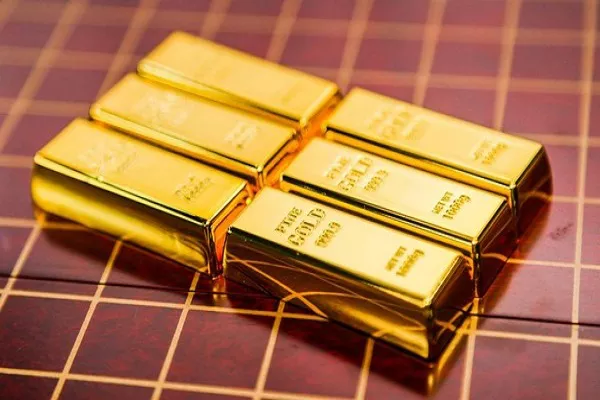Silver and gold are both precious metals with intrinsic value, often seen as safe-haven investments during economic uncertainty. Despite their similarities, silver is consistently priced lower than gold. This article explores the reasons behind this price disparity, examining factors such as market dynamics, historical significance, industrial uses, and supply-demand relationships.
Understanding Gold and Silver
1. Characteristics of Gold
Gold is a rare, malleable metal known for its lustrous yellow color and resistance to tarnish. Its properties make it ideal for various applications, including:
Jewelry: Gold’s beauty and durability have made it a staple in jewelry making.
Investment: Gold is often viewed as a hedge against inflation and currency fluctuations.
Industrial Uses: Although limited, gold has applications in electronics and dentistry.
2. Characteristics of Silver
Silver, while also a precious metal, has different properties that contribute to its lower price:
Conductivity: Silver is the best conductor of electricity and heat, making it valuable in industrial applications.
Malleability: Like gold, silver is malleable but is more prone to tarnishing.
Affordability: Due to its greater availability, silver is generally more accessible for consumers.
Historical Context
1. Value Through the Ages
Historically, gold has been regarded as the ultimate symbol of wealth and power. Its rarity and luster have made it a preferred medium for currency and trade. Conversely, silver has often been used as a secondary currency, influencing its value perception.
2. Currency Standards
Many countries adopted the gold standard, valuing their currency based on gold reserves. This practice solidified gold’s status as a primary store of value, while silver often played a supporting role.
Market Dynamics
1. Supply and Demand
Gold:
Limited Supply: Gold is rarer than silver, with fewer new discoveries. This scarcity supports its high price.
High Demand: Gold’s demand is driven by jewelry, investment, and central bank purchases, further bolstering its price.
Silver:
Greater Supply: Silver is more abundant, with significant mining production each year. This abundance contributes to lower prices.
Industrial Demand: While silver has industrial uses (electronics, solar panels), this demand can fluctuate based on economic conditions.
2. Market Sentiment
Investor sentiment plays a crucial role in the pricing of both metals:
Gold as a Safe Haven: During times of economic instability, investors flock to gold, driving up its price.
Silver’s Volatility: Silver prices can be more volatile, influenced by both industrial demand and speculative trading, which can lead to lower long-term price stability.
Investment Perspectives
1. Gold as an Investment
Investors often view gold as a stable, long-term investment. Its historical role as a hedge against inflation and currency devaluation solidifies its status as a preferred asset during uncertain times.
2. Silver as an Investment
While silver also serves as a hedge, its price movements are often more erratic. Investors might be attracted to silver for:
Lower Entry Costs: Silver’s lower price allows for more accessible entry points for new investors.
Potential for Upside: Some investors speculate that silver may outperform gold in certain market conditions, given its industrial uses.
Economic Factors
1. Inflation and Interest Rates
Both gold and silver react to changes in inflation and interest rates:
Gold: Often rises when inflation increases, as it is seen as a store of value.
Silver: May follow gold but is more sensitive to industrial demand, making it less predictable during inflationary periods.
2. Currency Strength
The strength of the U.S. dollar can significantly influence gold and silver prices:
Weak Dollar: Typically boosts gold prices, while silver may see less correlation.
Strong Dollar: Generally leads to lower prices for both metals, but silver often experiences a sharper decline.
Production and Mining
1. Mining Processes
Gold mining tends to be more costly and complex due to its rarity:
Higher Extraction Costs: Extracting gold requires significant resources, impacting its supply and price.
Environmental Regulations: Stricter regulations on gold mining can limit production.
In contrast, silver mining benefits from its widespread availability:
Byproduct of Other Mining: Much of the silver supply comes from the mining of other metals, such as copper and gold, which keeps production costs lower.
Easier Extraction: Silver can be extracted from ores more readily than gold, contributing to its abundance.
2. Recycling
Both gold and silver have high recycling rates, but gold recycling is often driven by its investment demand:
Gold: Much of the gold recycled comes from jewelry and investment products, maintaining its supply.
Silver: Industrial recycling is significant, but the overall impact on supply is less influential on its price.
Cultural Significance
1. Perception of Value
Culturally, gold is often viewed as the epitome of wealth and luxury:
Cultural Symbolism: In many societies, gold signifies power and status, affecting its desirability and price.
Ceremonial Uses: Gold is frequently used in religious and ceremonial contexts, further enhancing its value perception.
Silver, while also valuable, lacks the same level of cultural significance:
Accessibility: Silver is often associated with practicality rather than luxury, influencing how it’s valued.
Conclusion
The price disparity between silver and gold can be attributed to a complex interplay of historical context, market dynamics, economic factors, and cultural significance. While gold commands a higher price due to its rarity, demand as a safe haven, and cultural symbolism, silver remains an important asset with its own unique value proposition. Understanding these factors can help investors make informed decisions about whether to invest in gold, silver, or both, depending on their financial goals and market outlook. Ultimately, both metals play crucial roles in the investment landscape, offering opportunities for wealth preservation and potential growth.
Related topics:
- Krugerrand Gold Coins: History, Value, and Significance
- The Best Gold to Buy for Investment: A Comprehensive Guide
- Knowing Gold Spot: Definition, Pricing, and Market Impact


